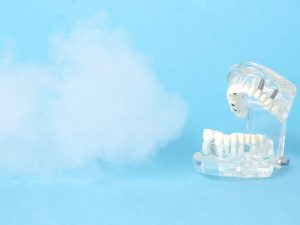 Ozone therapy is becoming one of the most important tools in biological dentistry. This safe, non-toxic treatment not only protects oral health but also supports whole-body wellness, making it a powerful option for dental care professionals.
Ozone therapy is becoming one of the most important tools in biological dentistry. This safe, non-toxic treatment not only protects oral health but also supports whole-body wellness, making it a powerful option for dental care professionals.
Ozone works by using its strong oxidizing properties to destroy bacteria, fungi, and viruses. Since harmful bacteria cannot defend against ozone, ozone therapy provides a reliable method for preventing and treating oral infections. Patients benefit from its safety and affordability, while practices can integrate it effectively into daily care.
Dentists can use ozone therapy in three main forms:
Ozone gas: applied directly to teeth to manage decay and sterilize oral environments.
Ozonated oil: derived from plants, penetrates gum tissue to combat periodontal infections.
Ozonated water: highly effective for disinfection and completely safe for routine use.
Ozone therapy also speeds up wound healing by boosting oxygen delivery to tissues. For periodontal conditions such as gingivitis and peri-implantitis, ozone therapy offers exceptional disinfection results compared to standard treatments.
Safety remains essential. Ozone therapy must be delivered in the correct dose and concentration to avoid complications. With proper training, dentists can achieve optimal results while protecting both patients and staff.
As more practices adopt ozone therapy, it is quickly becoming a cornerstone of modern biological dentistry. Its ability to fight infection, promote healing, and improve patient outcomes makes it an essential therapy for forward-thinking dental professionals. By offering ozone therapy, your practice can provide patients with advanced, science-backed care that sets you apart in the field of biological dentistry.
The International Academy of Biological Dentistry and Medicine (IABDM) is a network of dentists, physicians, and health professionals committed to promoting biological dentistry. Visit us online to learn how our health practitioners are promoting optimal health through the use of non-toxic dental materials.
